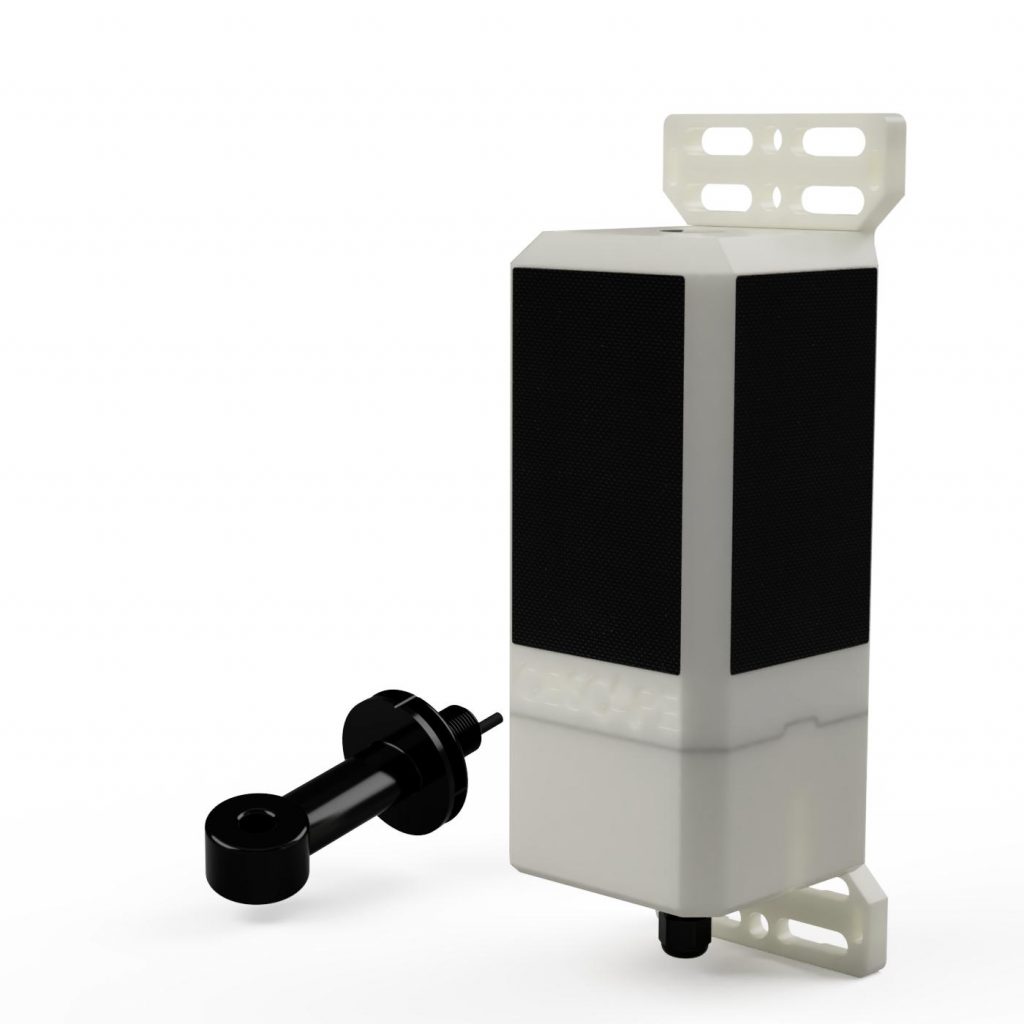How can monitoring Conductivity and Temperature help water quality control?

Dissolved substances, chemicals, and minerals can be found in most water bodies. Higher amounts of impurities can lead to a higher conductivity. Use of a CT Station to monitor dissolved salts from impurities, can confirm the heightened conductivity of water. Reports or Threshold alerts confirming changes in the conductivity of water may also indicate that a pollutant has entered the water.
Why measure temperature too?
Because conductivity is also affected by temperature: the warmer the water, the higher the conductivity. When working in a saline or brackish environment, the salinity can be readily calculated from the combined conductivity and temperature readings.
The collection and availability of observation data is key to understanding and addressing the challenges that climate change poses. Yet at the same time, there is a lack of environmental observation data in many places around the world, especially in those places that will be hit the hardest by the effects of climate change and accelerated sea level rise. This is definitely not because governments and researchers fail to appreciate the value of collecting such observations, but rather due to the fact that many existing monitoring solutions are cost-prohibitive. Whether that is due to high initial purchase costs, labour-intensive operation and maintenance or annual license fees to access the data, many scientific projects are lacking the budget to collect all the data they require when working with conventional environmental monitoring solutions.
The CT Station is durable, reliable, accurate, and has a relatively low purchase and running cost. It measures real-time conductivity, temperature, and salinity measurements.
Whereas traditional CT probes can suffer from rapid bio-fouling, combining the Obscape Power & Telemetry Module with a low-maintenance toroidal CT probe minimises marine growth.
The value of real-time observations strongly depends on the ability to view and analyse them in real-time. The CT Station comes with a license for the Obscape Data Portal. The Data Portal offers various options for viewing, managing and downloading your conductivity data, sending threshold alerts and checking device diagnostics.
With remote reporting in real time, it is easy and affordable to unify the office and the field.
This problem was recognised by the eThekwini Municipality (city of Durban) in South Africa. The municipality is faced with a multitude of environmental challenges. Powerful swell waves are hammering the Durban coastline year-round, causing persistent beach erosion and occasional flooding of the city’s famous Golden Mile beach front. The municipality comprises no less than 17 rivers, each with their own estuary that flows out directly into the Indian Ocean. Intense rainfall events combined with the hilly terrain lead to rapid stormwater runoff, landslides, sudden rising of river water levels and flooding of settlements on the river banks.
APPLICATIONS:
Environmental Monitoring and Aquaculture
Monitoring the conductivity of water bodies, can be used to estimate the concentrations of dissolved salts in the water, which can provide insights into processes affecting the water. In coastal areas and estuaries, the conductivity of water may change due to mixing of sea water and river run-off, or may rise due to contamination. On fresh water bodies, the conductivity of water may increase in the summer when evapotranspiration is high and decrease when the water is diluted by snowmelt or heavy rains.
In ecosystems and aquaculture, aquatic plants and animals have certain ranges of salinity that they can tolerate. Because of this, the conductivity of water bodies such as dams, rivers and reservoirs should be monitored to warn if the salinity is in danger of falling outside of the tolerable range of aquatic animal species.
Processed Water and Industrial Applications
Because conductivity can be used to estimate the dissolved mineral content of water, it may be used to monitor demineralization or remineralization processes.
In places where water is processed there is potential for water to become polluted. Contamination from a spill or leak can then be detected by monitoring changes in conductivity.
Where the leaking water may have a higher conductivity, conductivity measurements may be used to detect leaks or used to monitor the effectiveness of rinsing procedures, where a low conductivity of water in contact with the rinsed object indicates an effective rinse. In certain circumstances, conductivity can even be used to measure pH due to the strong relationship between conductivity and pH.
Agricultural Applications
The monitoring of water sources used for crop irrigation is very important. If the salinity is too high, salts will accumulate in soil as the water evaporates, which may degrade soil quality and inhibit plant growth.
If you have a project in mind which involves monitoring Water Quality, we would love to hear about it. Please get in touch and let us know how we can help: info@obscape.com
Click here to find out more about our products: Shop for Products







